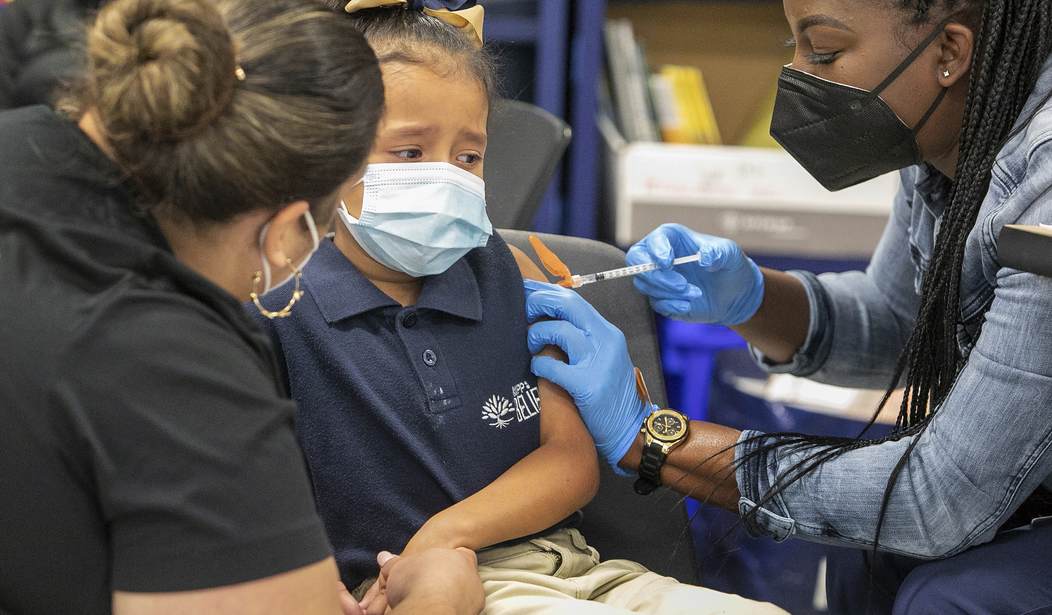Today the CDC’s Advisory Committee on Immunization Practices (ACIP) met to discuss and vote on whether or not to add the COVID-19 vaccines from Pfizer and Moderna to the list of recommended childhood vaccines for children six months and older. In a unanimous vote, the ACIP approved the addition. Pfizer and Moderna vaccines are still under emergency use authorization (EUA), making their consideration and approval for inclusion on the Vaccines for Children (VFC) schedule unprecedented.
On October 12, the FDA approved a EUA for the omicron vaccine version from Pfizer for children five and older. The Moderna version earned a EUA for children six and older. The CDC immediately followed suit. Neither agency convened its advisory committees to evaluate the data. The original vaccine series is authorized under a EUA for children older than six months.
The committee emphasized that adding the COVID vaccines to the VFC ensured access to families who cannot afford vaccines and reiterated that the agency does not issue vaccine mandates for school attendance. These statements are performative, as it is well-established that states and school districts use the VFC to issue mandates.
California was the most aggressive state in announcing a COVID-19 vaccine requirement for school attendance shortly after the FDA and CDC approved the jabs for school-age children. However, implementation is now delayed until at least 2023. Likewise, New York City pushed back its mandate, and Washington D.C. will likely delay its requirement at a meeting on November 1. All of them may now use the ACIP recommendations to move ahead.
In late September, just before the approval of omicron vaccines for children, a member of the FDA’s vaccine advisory group Dr. Paul Offit observed the following about vaccines and boosters for children:
Well, in some ways, it’s a matter of your style. In other words, some parents may argue, well, if there’s any benefit, then I’ll accept what I think is a low risk. And others may argue, well, if there’s any risk, I don’t want to risk that if the benefit is so low. So I think– I just don’t think it’s going to make much of an impact in otherwise healthy young people.
Current CDC guidelines require that an individual receive the original two-dose vaccine series before receiving the dose formulated for omicron. According to the CDC, only 31.6% of children aged five to 11 and 60.8% of those aged 12-17 completed the initial series of vaccines.
In the same interview Offit cited data on previous booster campaigns to advocate for boosters staying focused on specific populations:
The people that really benefited [from COVID-19 booster vaccines] were, one, people who are older, meaning those over 75. Two is people who had serious health problems, like chronic lung disease or chronic heart disease, or out of control type 1 diabetes, where even a mild illness could land them in the hospital. And then thirdly, the people who were immune compromised. So I think focusing on those three groups for this bivalent booster dose probably makes the most sense.
During the hearing, the presentation included data on COVID-19 hospitalizations among vaccine-eligible children according to CDC tracking. This data does not delineate between hospitalization with and hospitalization for COVID-19. Even Dr. Fauci admitted that a COVID-19 hospitalization in a child is often incidental. The virus is only detected through mandatory testing, and a child may be admitted for another illness.
The presenters used this data to try to make the case that omicron has proven significantly more deadly for children than previous variants. If this were the experience of the public, parents would be lining up to get their young children vaccinated. That has not happened.
The presentations also downplayed the risk of cardiac complications for young men following vaccination. It asserted that the risk of myocarditis from a COVID-19 infection was more significant than the risk from the vaccine. Other monitoring of medical claims data disputes this assertion. The data did not provide the relative risk of myocarditis from an infection with the omicron variant.
Recommended: Which Age Group is Most Likely to Vote GOP in 2022? Gen-Xers, of Course!
Seroprevalence data shows that most children were already exposed to COVID and have some innate immune protection. As of February 2022, seroprevalence studies showed that 60% of Americans, including three out of four children, had been infected with one of the COVID-19 variants. Studies show that exposure produces an immune response that provides some protection from severe illness through memory T-cells that recognize parts of the virus.
Florida, which recently recommended that healthy men under 40 not receive the COVID-19 vaccine, will not be following the ACIP recommendation to add the mRNA vaccination to routine childhood vaccinations:
Regardless of what @CDCgov votes tomorrow on whether COVID-19 vax are added to routine child immunizations – nothing changes in FL.
Thanks to @GovRonDeSantis, COVID mandates are NOT allowed in FL, NOT pushed into schools, & I continue to recommend against them for healthy kids.
— Joseph A. Ladapo, MD, PhD (@FLSurgeonGen) October 18, 2022
Surgeon General Joseph Ladapo recommended against the vaccines for healthy children earlier this year and will not be reversing that guidance. Governors in other states should work to ensure medical freedom for parents and prevent any school from mandating an experimental vaccine for children.










Join the conversation as a VIP Member